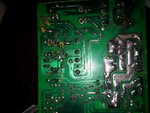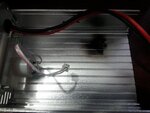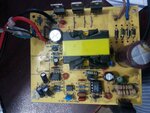imranahmed
Advanced Member level 3

- Joined
- Dec 4, 2011
- Messages
- 817
- Helped
- 3
- Reputation
- 6
- Reaction score
- 3
- Trophy points
- 1,298
- Location
- Karachi,Pakistan
- Activity points
- 6,493
Please let me know that I am repairing (Chinese) smps based car battery charger I have changed 3 times Mosfet 10N60
and source resistor 1-ohm and uc3842.
But now I increase 1-ohm to 3-ohms but output current reduce to 1 Amp and before it was 6 Amps.
And now UC3842 slightly heat-up.
Can any one tell me reason behind heating-up UC3842.
Thanks.
and source resistor 1-ohm and uc3842.
But now I increase 1-ohm to 3-ohms but output current reduce to 1 Amp and before it was 6 Amps.
And now UC3842 slightly heat-up.
Can any one tell me reason behind heating-up UC3842.
Thanks.





